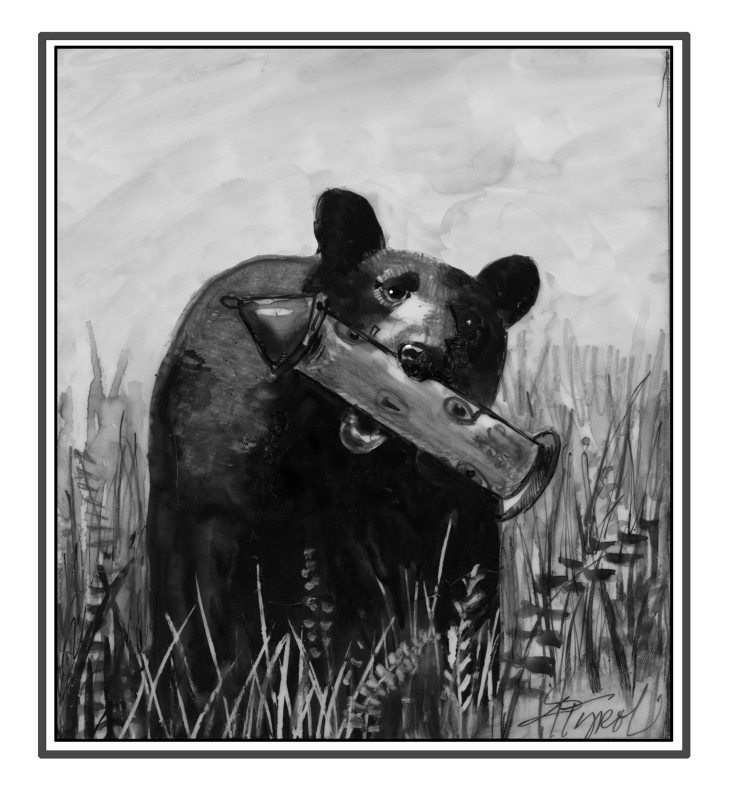
A few nights ago, I heard a crash on the front porch and flicked on the light to reveal a black bear’s reflective eyes. It lorded over the contents spilling out of our overturned floor freezer. I opened the door, prompting it to tear back through the screen and off into the night.
With Vermont’s black bear population at a record high, this kind of encounter is no surprise. Vermont Fish & Wildlife set a statewide population goal of 3,500 to 5,500 black bears, based on available habitat for food, cover, and winter denning, as well as the size of black bear territories. But in 2024, the population numbered between 6,800 and 8,000. These numbers have been consistently high for four years, resulting in a significant rise in interactions between people and bears, larger numbers harvested by hunters, and more bears being killed by vehicles (183 in 2024).
At just under 6,000 individuals, New Hampshire’s black bear numbers are also above the statewide goals set by the state’s Fish and Game Department to balance population with available habitat and resources. In the White Mountains, the bear population is twice the Fish and Game goal of 0.8 bears per square mile.
Jaclyn Comeau, lead bear biologist for Vermont Fish & Wildlife, says the two biggest drivers of population increase are habitat recovery and restrictions on legal black bear hunting. “The population has been slowly growing since we began estimating the population in the early 1970s,” Comeau said. “We experienced a period of growth from 2018 through 2022 of about 12 percent annually. The population has been hovering near the 2022 peak for the past couple of years.” Numbers continue to grow despite increased mortality due to hunting and vehicle strikes.
Researchers surmise that rising birth rates, cub survival, and access to alternative foods are contributing to the population increase. Black bears are omnivores and eat a variety of foods, ranging from beechnuts, acorns, wild apples, and fungi, to insects, fish, amphibians, reptiles, birds, and even some mammals, including young deer and baby moose. Bear populations normally rise and fall with the availability of staple foods such as beechnuts. In the last two decades, black bear populations have risen dramatically in places where acorns are abundant and agricultural fields are full of corn, such as the Connecticut River Valley.
“We suspect that access to greater food diversity might be increasing reproductive rates and possibly survival of cubs,” Comeau said. “We also wonder if increased access to human-caused foods may supplement bear diets in a way that negates the normal limitations that wild food crop failures place on the population.”
The large population of black bears has led to more interactions with people and an increase in their incursions into densely populated areas. Although bears instinctively flee when they see or smell people, it is important to give them a wide berth and leave space for the animal to escape. Human-bear encounters often happen when the animal is surprised and doesn’t have enough time to leave. To reduce the chances of a close encounter, make noise while hiking and keep dogs leashed.
Black bears have a good memory and will often return to where they previously found food. “They are food motivated animals,” Comeau observed. “They want a high calorie meal with as little effort and risk as possible.” Bears are attracted to bird feeders, compost, gardens, orchards, bees, and garbage. Keep trash and compost securely covered and located where bears cannot access them. “You want to avoid teaching a bear that your backyard is a place to find food,” Comeau said. “They will remember!”
At my property, I wait until winter before putting up the bird feeder and take it down again in early spring. And that floor freezer that used to live on the screened-in porch is now safely ensconced in the basement.


Discussion *